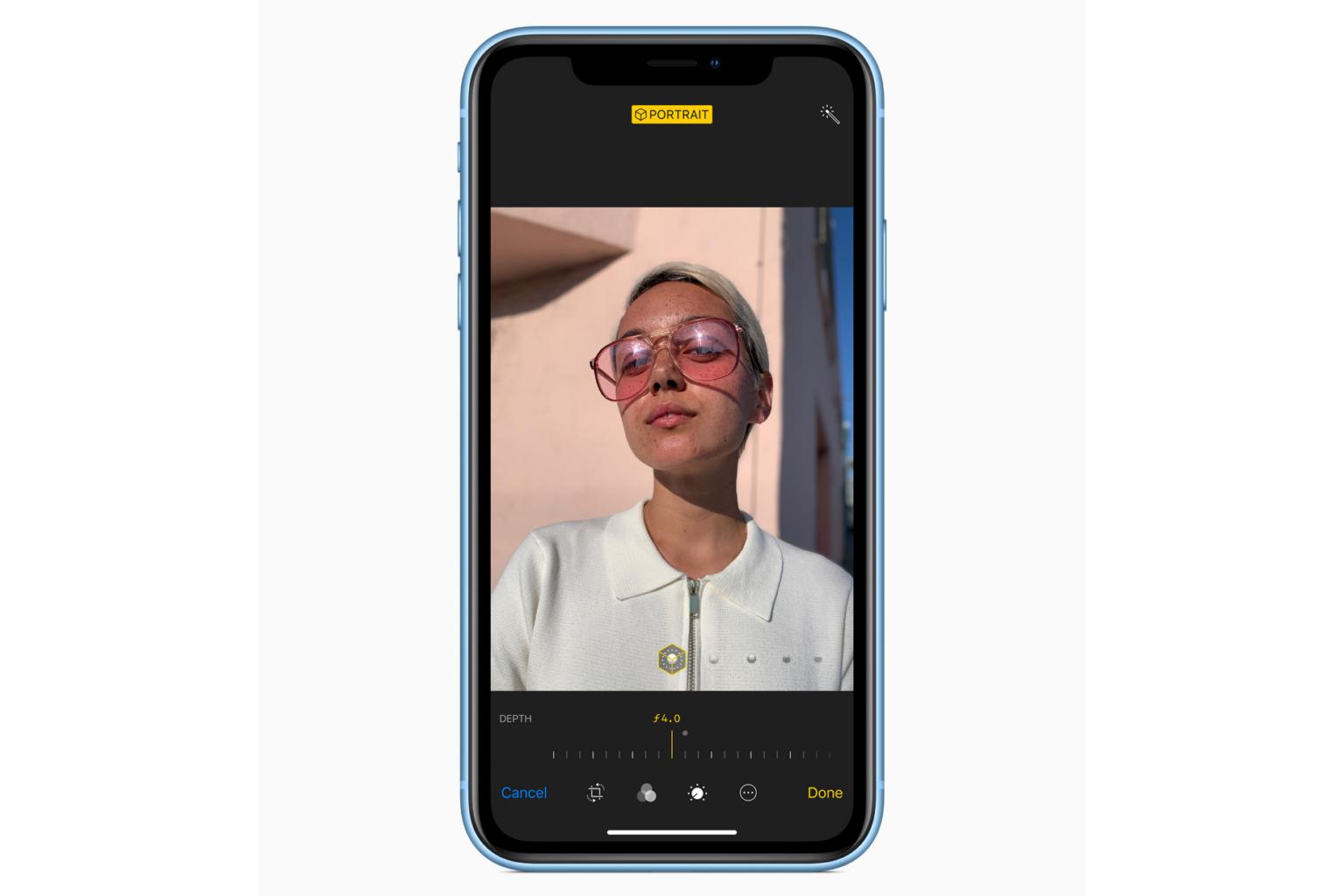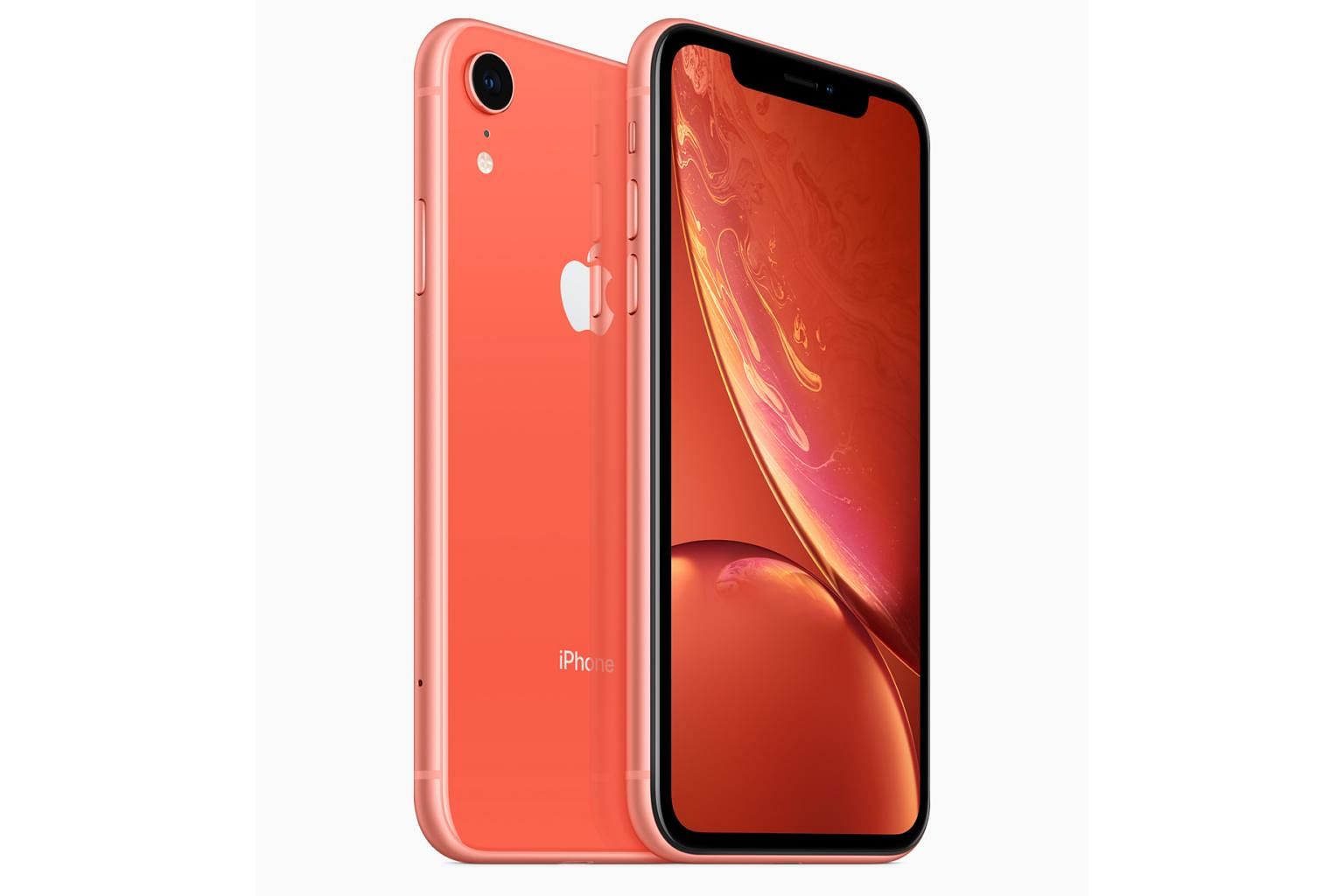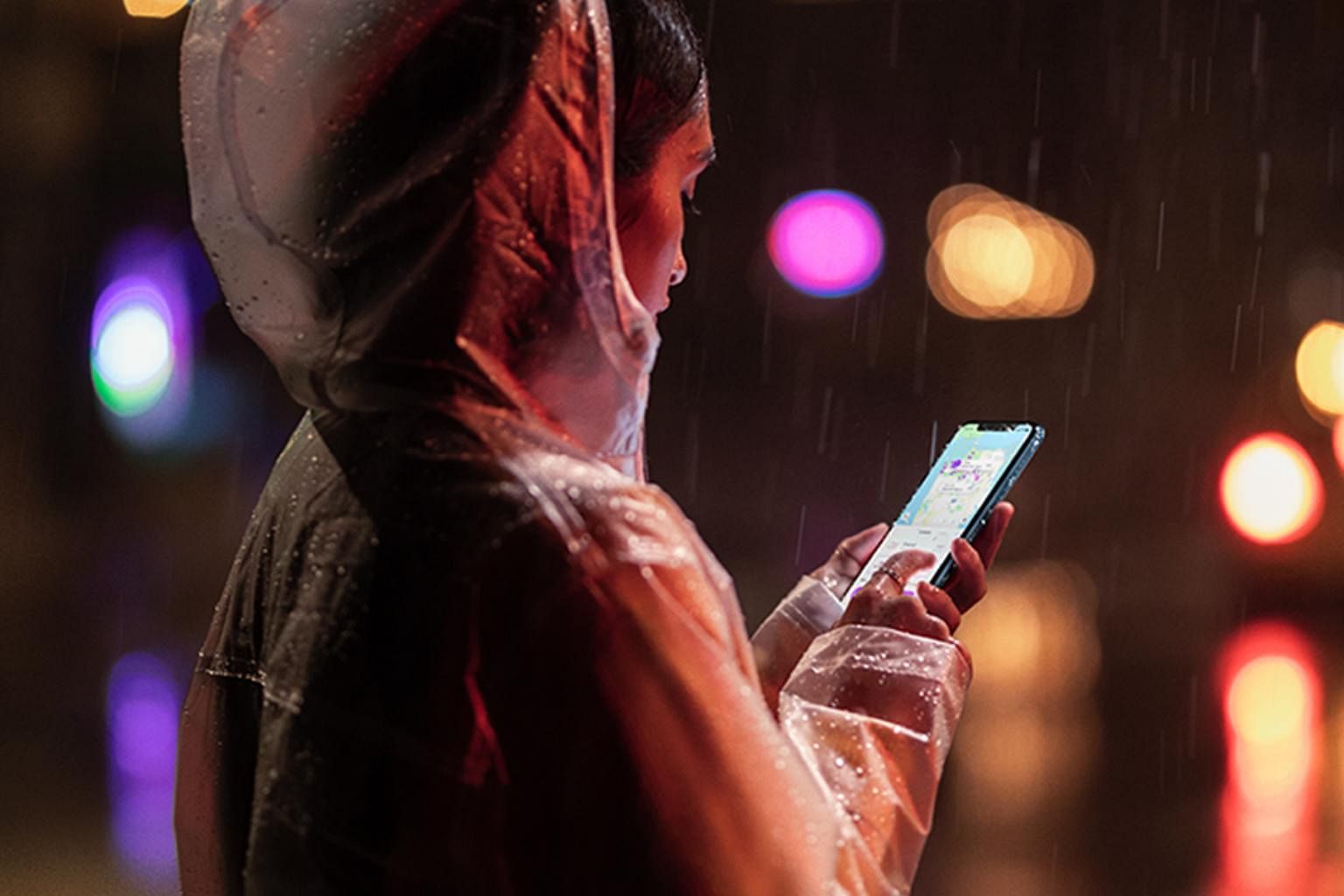Apple iPhone XR review: A more affordable but still attractive option
Sign up now: Get ST's newsletters delivered to your inbox

The iPhone XR does not have an extra rear telephoto camera like the flagships, with only a single rear 12-megapixel wide-angle camera.
PHOTO: APPLE
Trevor Tan
Follow topic:
The Apple iPhone XR is the "mid-range" smartphone for those who cannot afford or are unwilling to pay for the flagship iPhone XS or iPhone XS Max.
It looks very much like the iPhone X and its current flagship cousins. It features a similar all-screen design with the front notch, which houses the TrueDepth Camera that makes Face ID possible. There is no Home button - yes, the Home button is totally gone from all new iPhones.
So what are the differences between the iPhone XR and the latest flagship iPhones? There are several but they are subtle.
DISPLAY
The iPhone XR uses a 6.1-inch LCD touchscreen display, or Liquid Retina display as Apple calls it, instead of the Oled displays found in the flagships. Oled screens are able to display colours more accurately and with better contrast.
The display has a lower pixel density (326 pixels per inch) than its flagship cousins (458 pixels per inch).
Comparing the iPhone XR's display with my iPhone X's, I found the differences to be really subtle. Playing the same movie on both phones, the difference in sharpness was hardly noticeable.
The same goes for colour reproduction, but the iPhone XR's display does look slightly brighter with both phones set to the same brightness level. The iPhone XR's display still supports True Tone technology that adjusts the display's white balance to match the colour temperature around you, which is good for your eyes.
However, it does not have the flagships' 3D Touch function, which provides quick actions from supported apps without having to start the apps themselves. But the LCD display works superbly, responding to my taps and gestures swiftly without any lag.

DESIGN
The iPhone XR uses aerospace-grade aluminium for its structural band, instead of the flagship's stainless steel, to complement the front and black glass.
Honestly, I can't feel the difference between the two metals. The iPhone XR still feels sturdy and great in the hand.
And if you are looking for colours in your life, the iPhone XR provides six colour options - black (version tested), white, blue, yellow, coral and red.
The bezels are slightly but visibly thicker than those on the flagships - not a deal breaker as I think the iPhone XR's size actually hits the sweet spot between the smaller iPhone XS and bigger iPhone XS Max. It allows easy one-hand operation, at least for me.
The iPhone XR has a water resistance rating of IP67, meaning it can be submerged in water to a depth of 1m for 30min. In contrast, the iPhone XS and iPhone XS Max have a higher IP68 rating - both phones can be submerged to a depth of 2m for 30min. Still, it is not a good idea to dunk any smartphone into a swimming pool for long periods.
The XR also supports Qi wireless charging, unlike some mid-range Android smartphones.

CAMERA
The iPhone XR does not have an extra rear telephoto camera like the flagships. It only has a single rear 12-megapixel wide-angle camera. This actually might be a deal-breaker for some.
Still, it is the same wide-angle camera found in the iPhone XS with deeper pixels for improved image fidelity and larger pixels for better low-light sensitivity.
Comparing the photos taken with an iPhone XS Max and iPhone XR of a sunny landscape, I saw no difference in terms of image sharpness and details, though I found the iPhone XR tends to slightly overexpose an image. In low-lighting situations, there is no difference in terms of exposure or image quality between both phones.
Like the flagships, the iPhone XR allows users to adjust depth of field that simulates changing the aperture size after taking a shot. You can adjust the intensity of the background blur, or bokeh effect, to your liking.
However, the iPhone XR loses the Stage Light and Stage Light Mono lighting effects in Portrait mode which the iPhone XS and iPhone XS Max have. In addition, the Portrait mode only works when it detects people. So, I can't use it to shoot flowers like I can with my iPhone X.
But with its TrueDepth Camera, the iPhone XR is able to take nice portrait selfies with all the lighting effects available.
-
TECH SPECS
PRICE: $1,229 (64GB), $1,299 (128G), $1,469 (256GB, version tested)
PROCESSOR: A12 Bionic six-core chip with embedded neural engine
SCREEN: 6.1-inch Liquid Retina HD (1,792 x 828 pixels)
CAMERAS: 12-megapixel rear camera (wide-angle f/1.8), TrueDepth Camera (7-megapixel front-facing camera f/2.2)
WEIGHT: 194g
RATING
FEATURES: 3/5
DESIGN: 4/5
PERFORMANCE: 5/5
BATTERY LIFE: 5/5
VALUE FOR MONEY: 4/5
OVERALL: 4/5
SPEED
Performance wise, the iPhone XR is just as quick as the flagships. No surprises since they all share the same A12 Bionic processor with an embedded neural engine used for machine learning.
In the GeekBench 4 benchmark tests, the iPhone XR scored 4,827 points in the single-core test and 11,300 points in the multi-core test. This is pretty similar to the iPhone XS' score of 4,788 points (single-core test) and 11,371 points (multi-core test) and better than Samsung Galaxy Note9's score of 3,760 points (single-core) and 9,094 (multi-core) points.
Playing games, whether they are survival shooter games like Fortnite and PUBG Mobile, felt smooth. For augmented reality (AR) games, such as The Machines and The Sims FreePlay, the performance is equally fluid.
BATTERY LIFE
The iPhone XR has the longest battery life of any iPhone ever, according to Apple.
In our usual battery stress-test, in which we looped a 720p video at full brightness and full volume and with Wi-Fi turned on, the iPhone XR lasted 10hr 50min.
In comparison, the iPhone XS lasted 9hr 30min, while the iPhone XS Max lasted 10hr 20min.
Battery mileage depends on usage habits, of course. During my tests, the iPhone XR usually still has around 60 per cent battery life left at the end of a day that includes the regular monitoring of Facebook and Instagram updates, constant checking of e-mails, typing and sending messages in WhatsApp and Telegram, as well as occasionally playing Pokemon Go.
PRICING
Needless to say, there will be many who claim you can buy a much better smartphone like the soon-to-be-released Huawei Mate 20 Pro ($1,348) than the iPhone XR.
For iPhone users, moving to Android phones means the hassle of porting your phone's entire content to the Android platform. The reason why I chose the iPhone is the ease in "cloning" your current iPhone to a new iPhone using the iTunes backup restore feature.
So, if you still want to stay within the walled, carefree garden of iOS without spending too much money to get the flagship iPhones, the iPhone XR is your best option.
In fact, I think the Apple iPhone XR poses more of a threat to Apple's flagship iPhone XS and iPhone XS Max than other Android smartphones, with its lower pricing but similar performance.
Verdict: For users of older iPhones seeking for an upgrade, the more affordable iPhone XR provides an attractive option.

